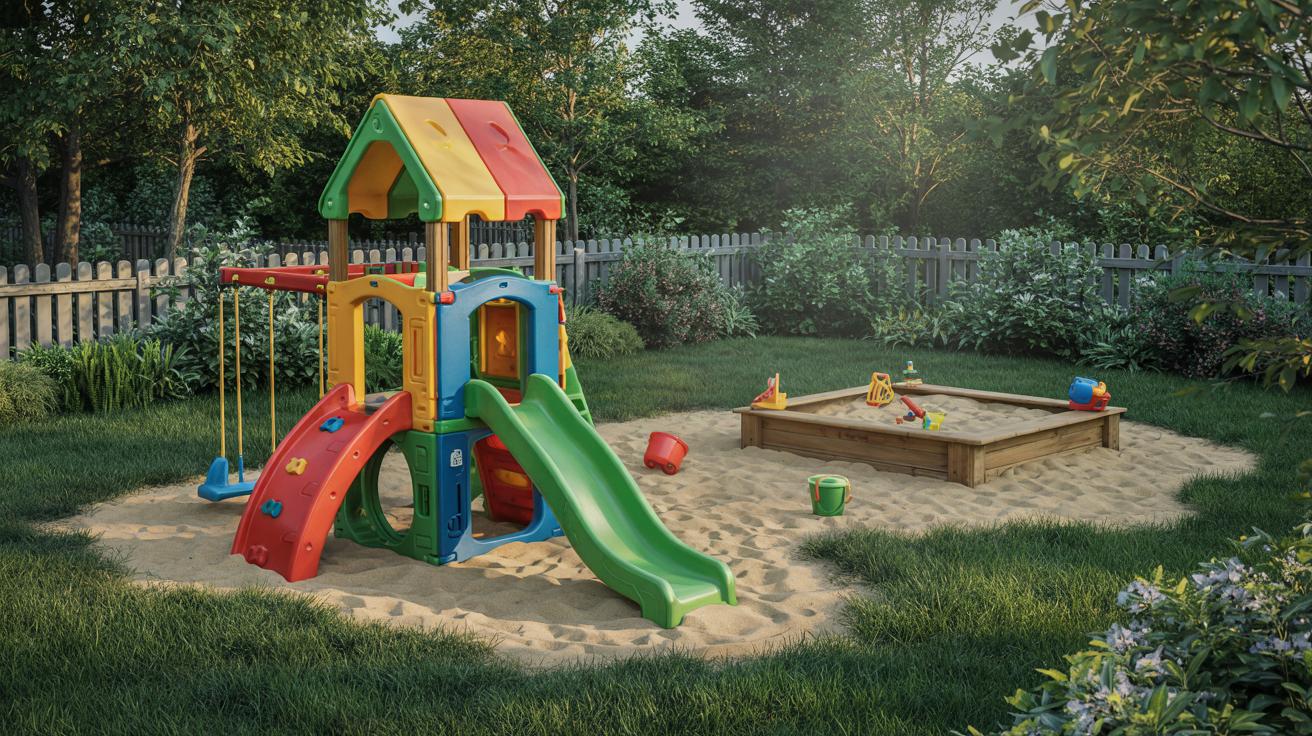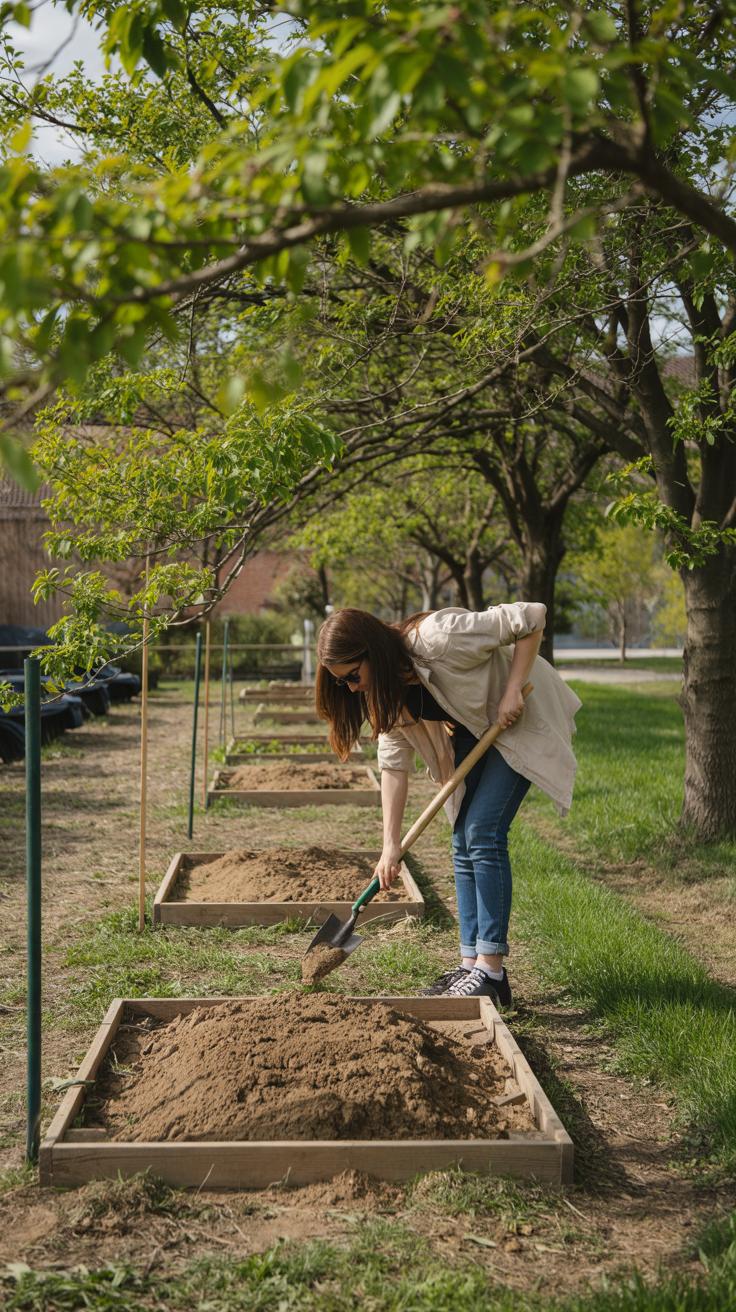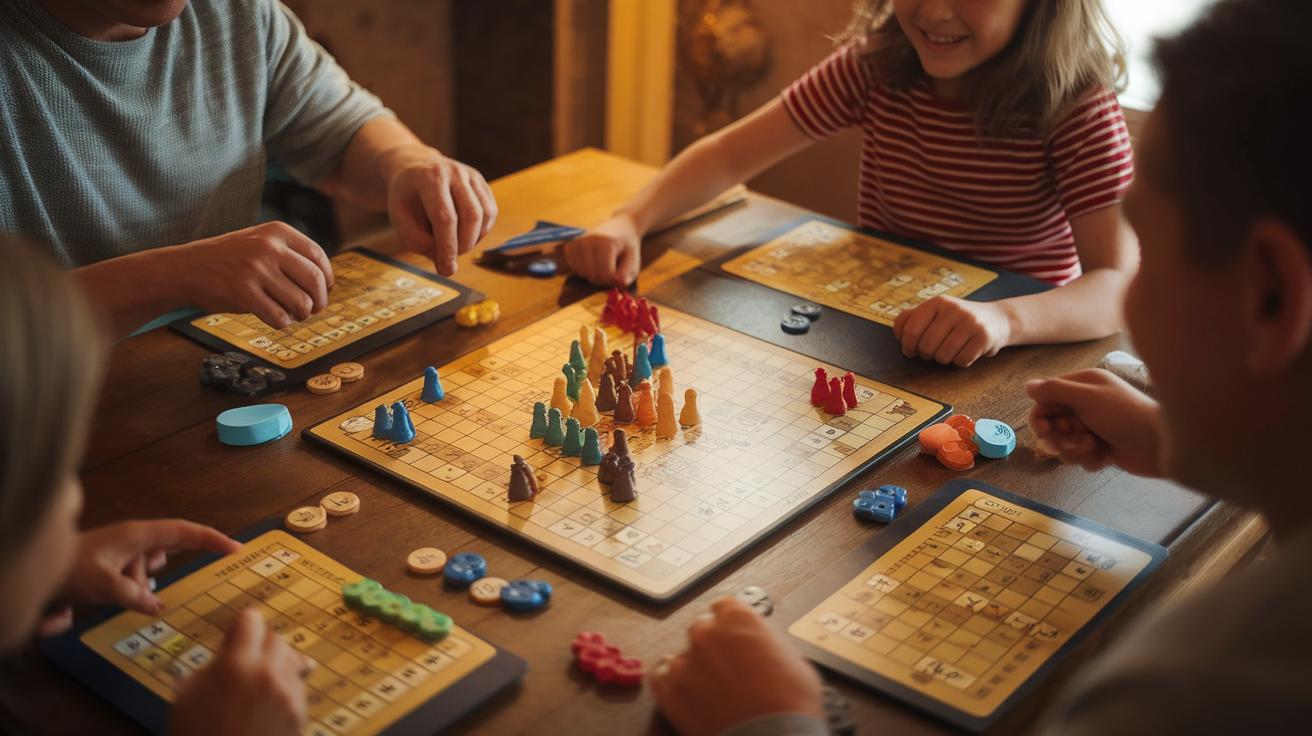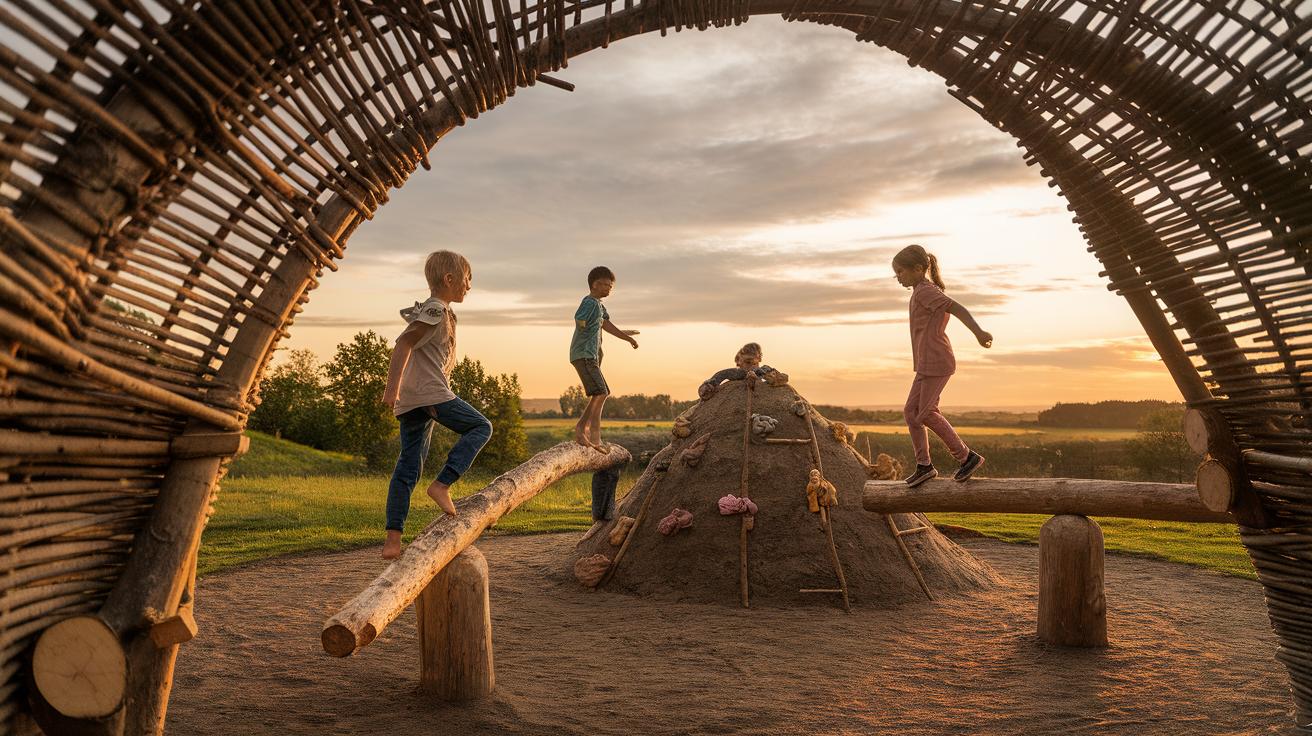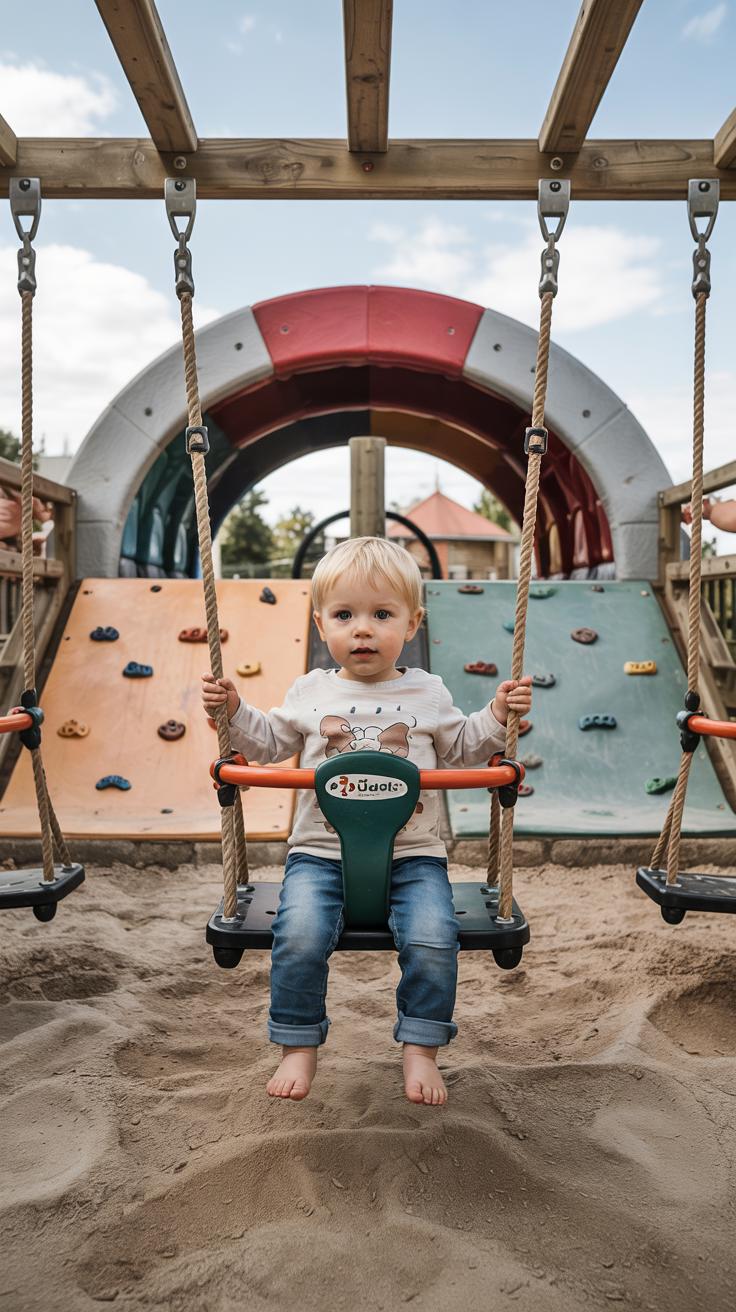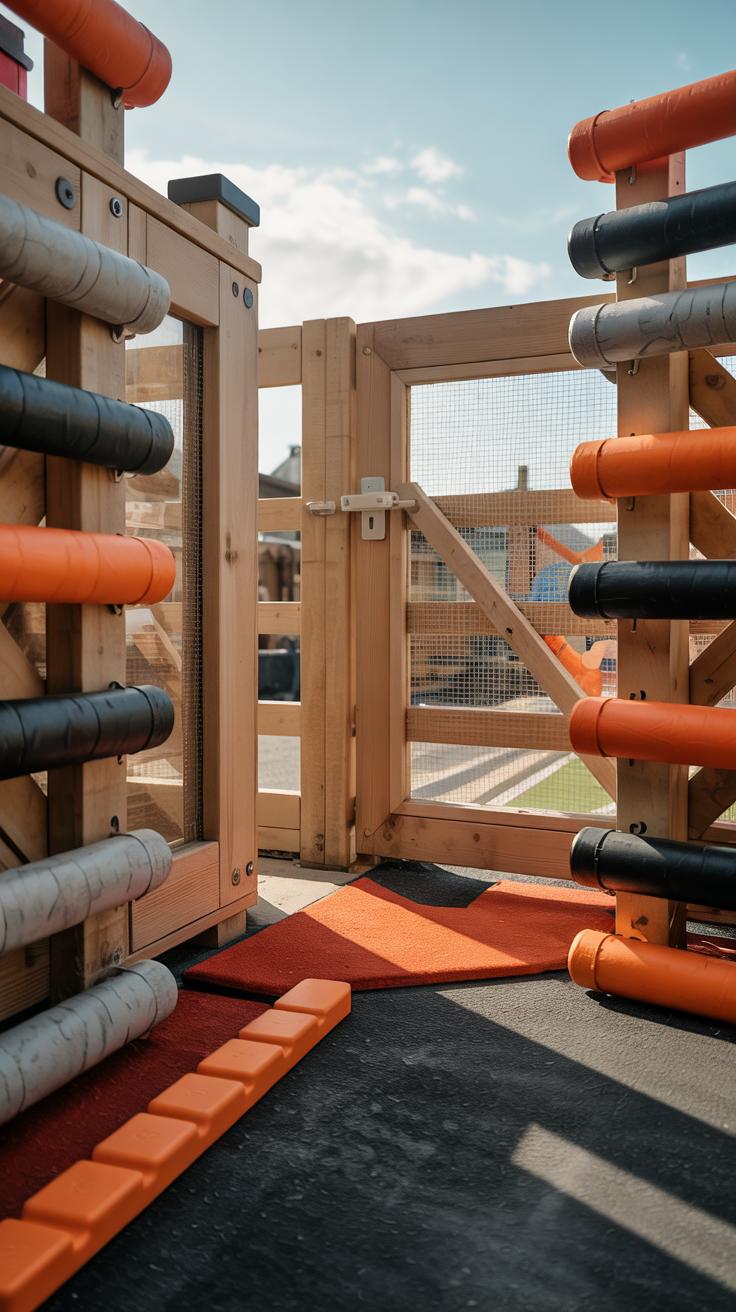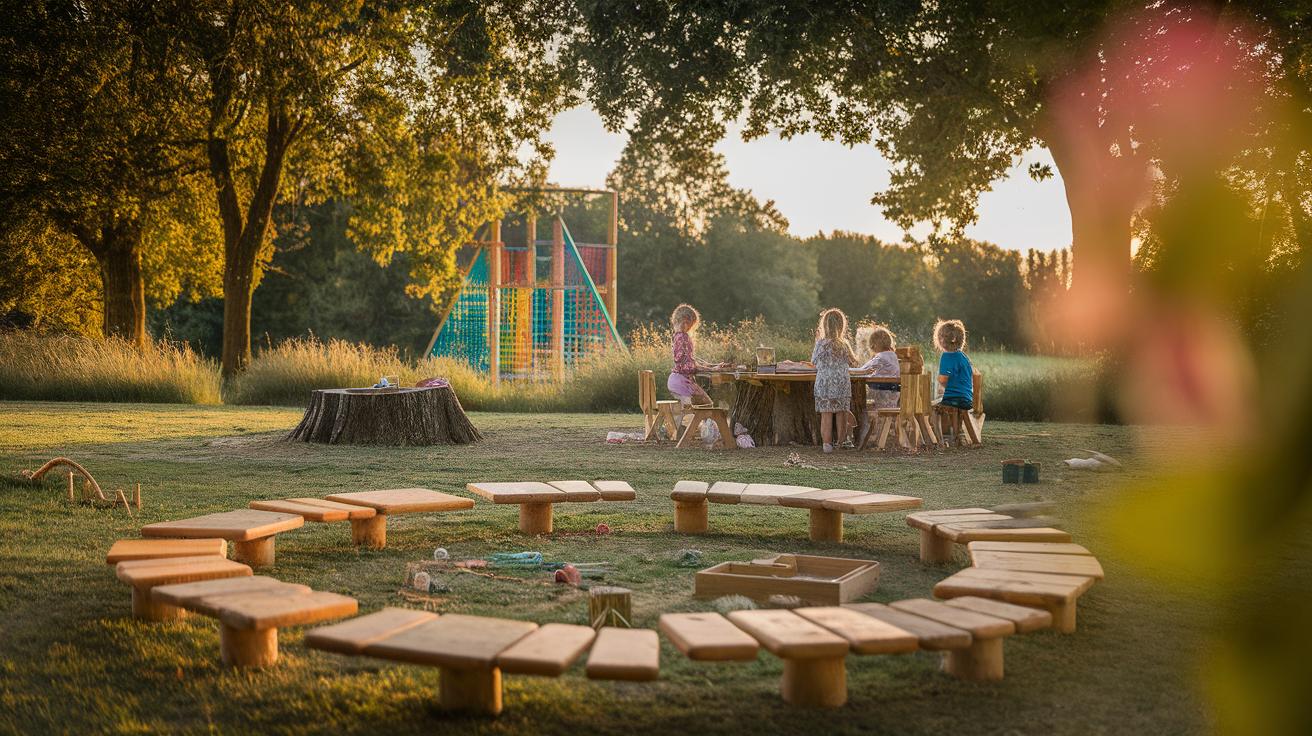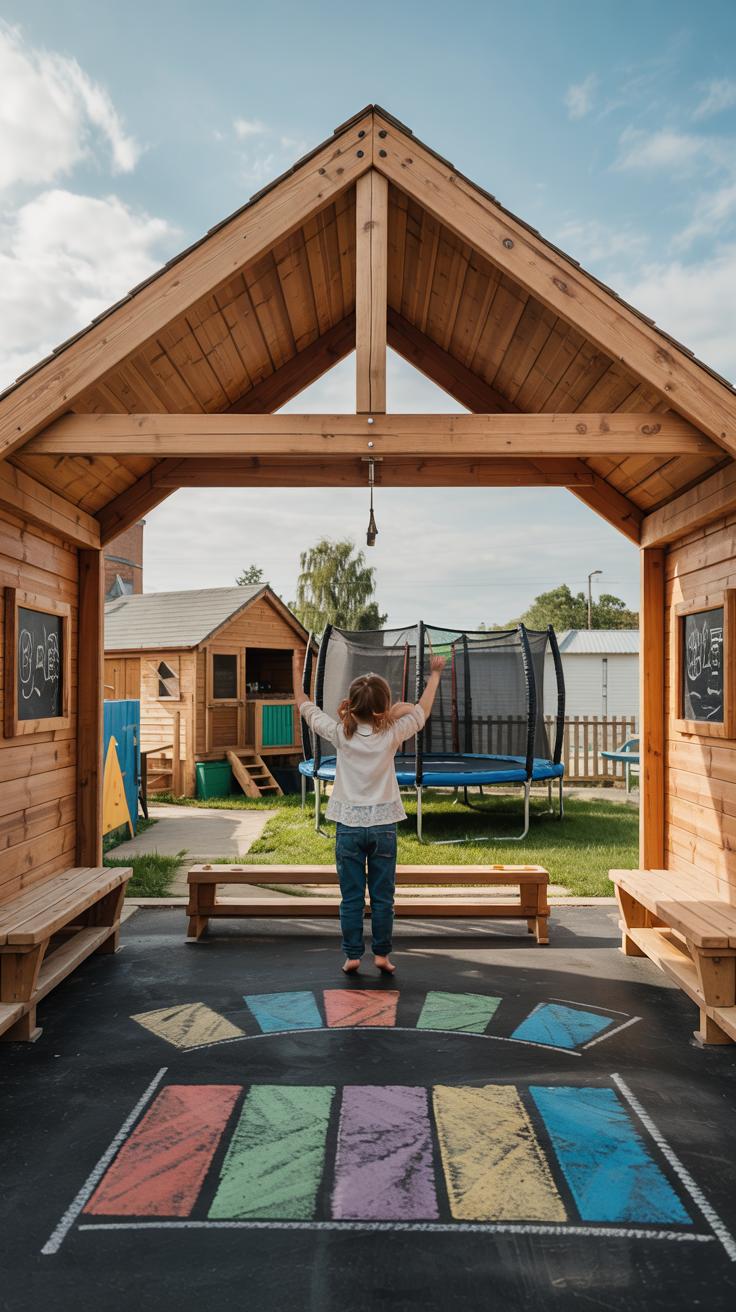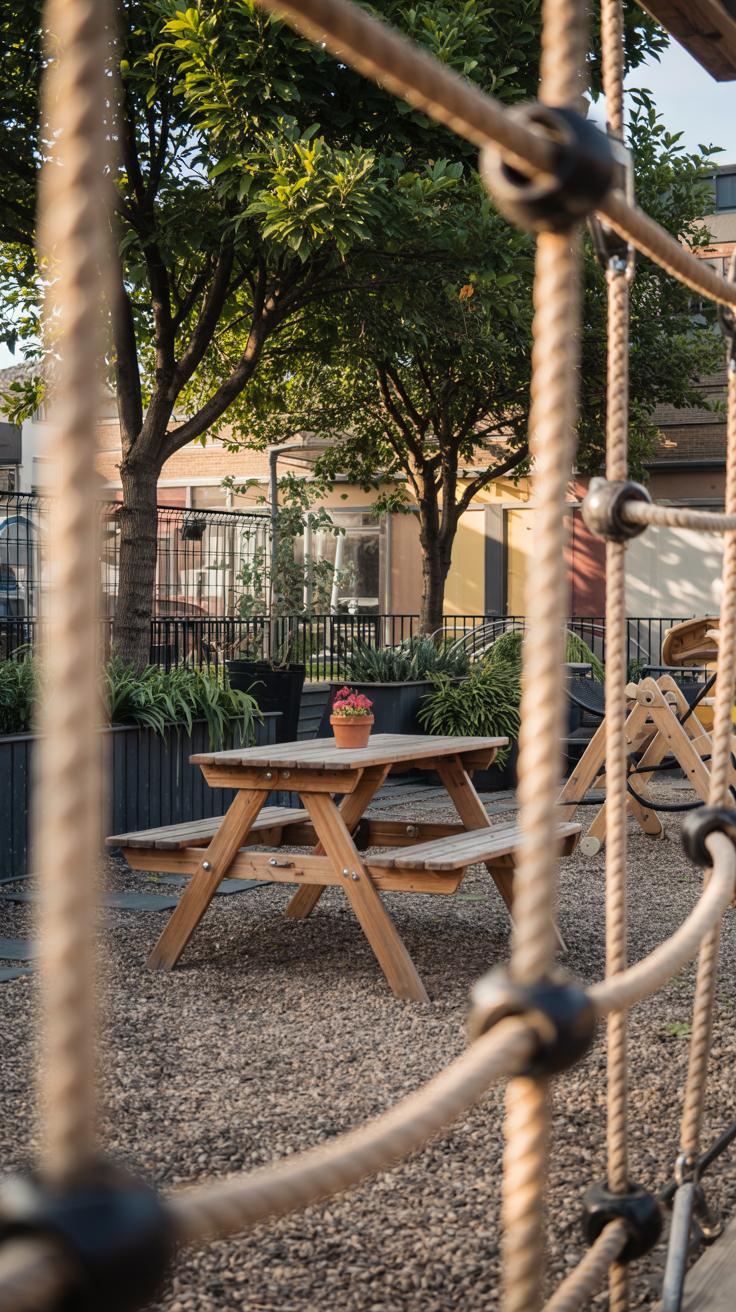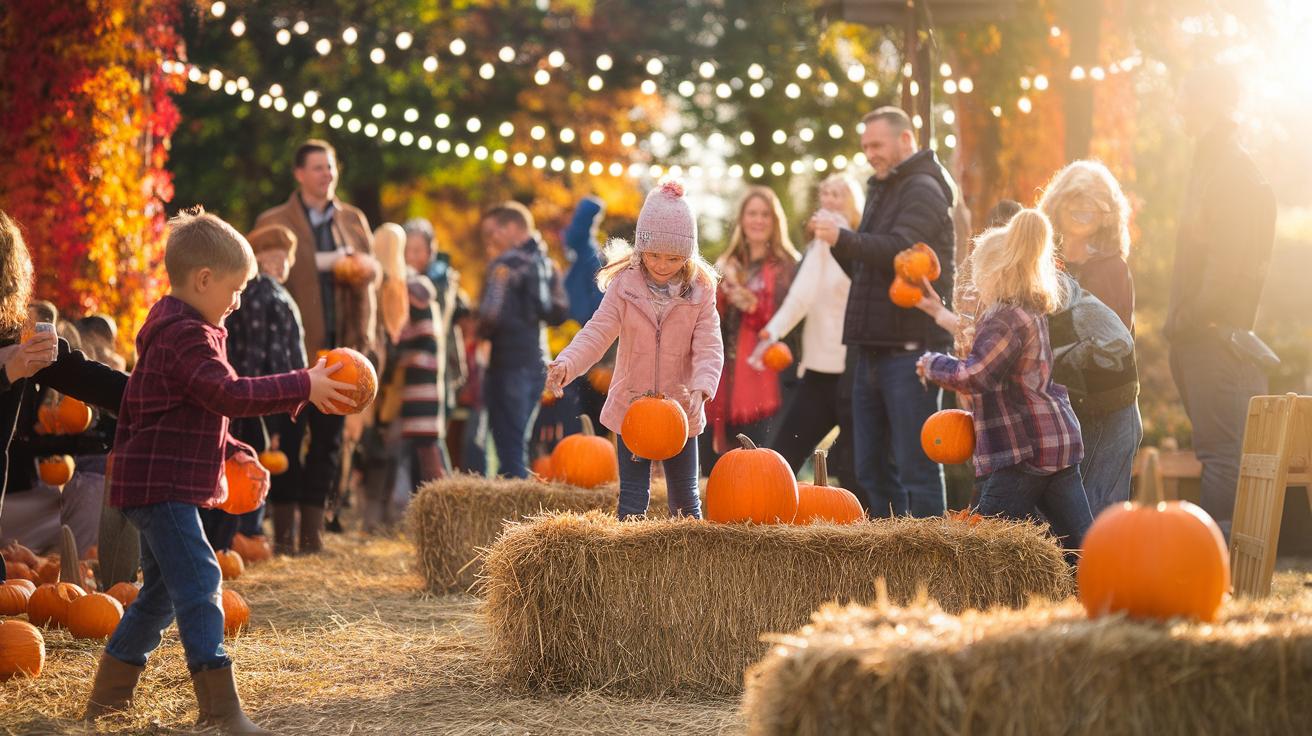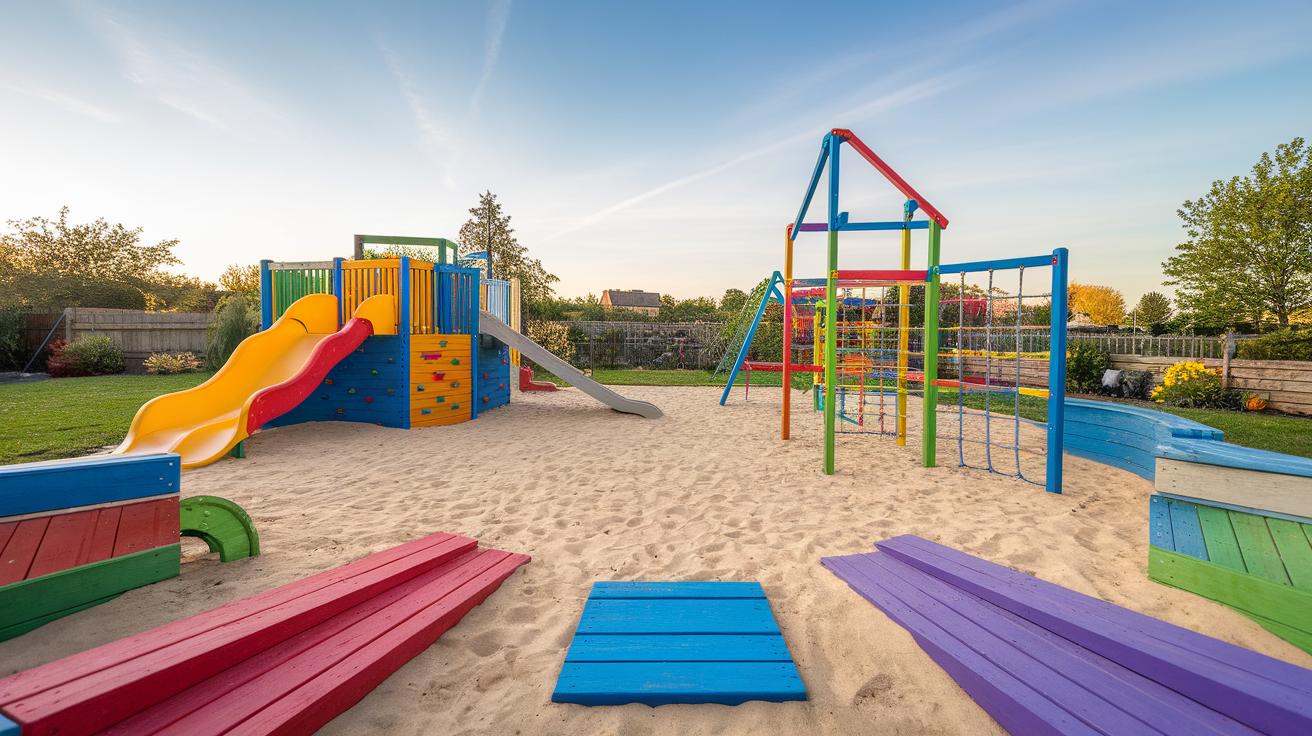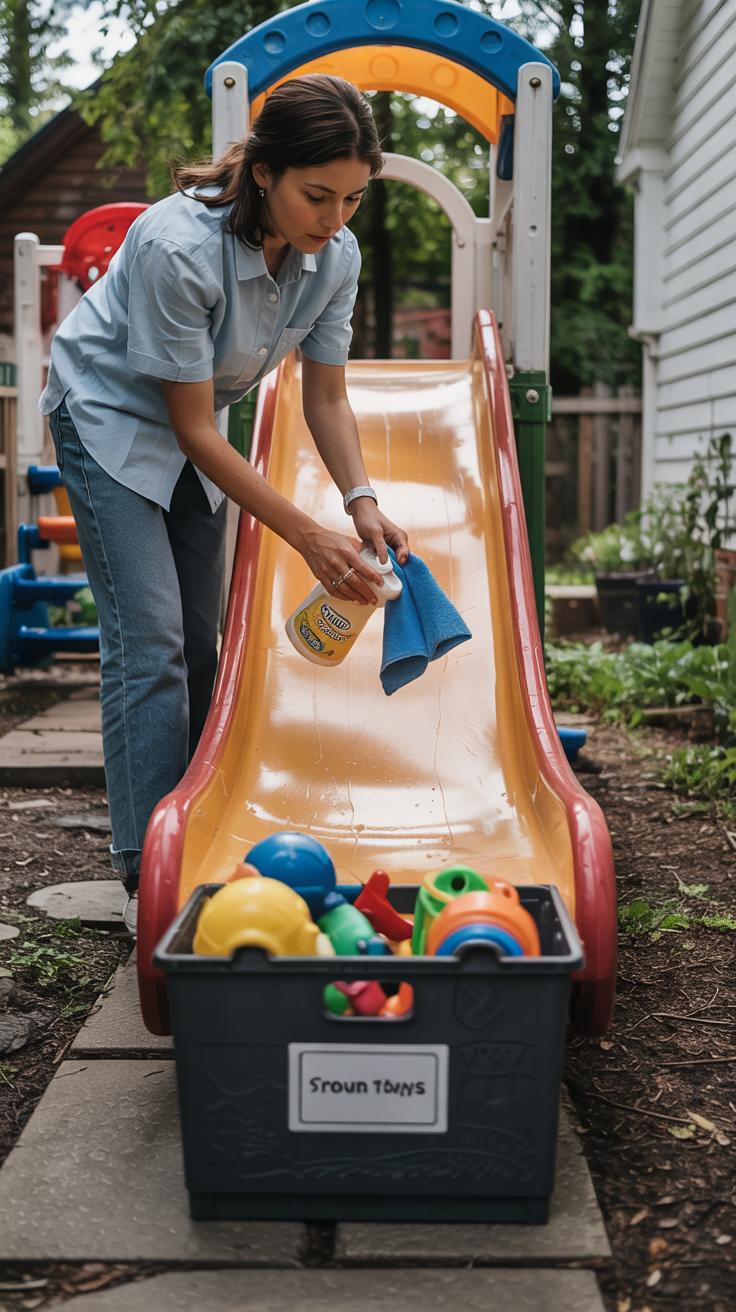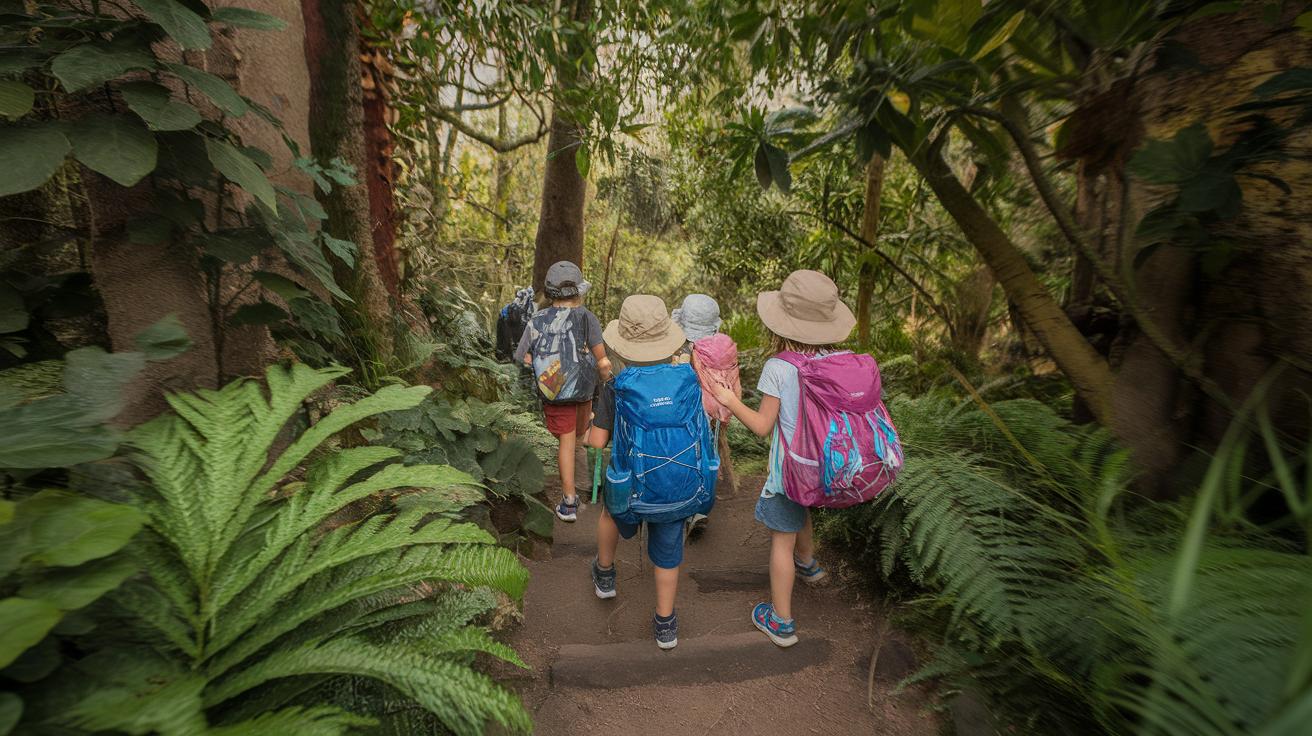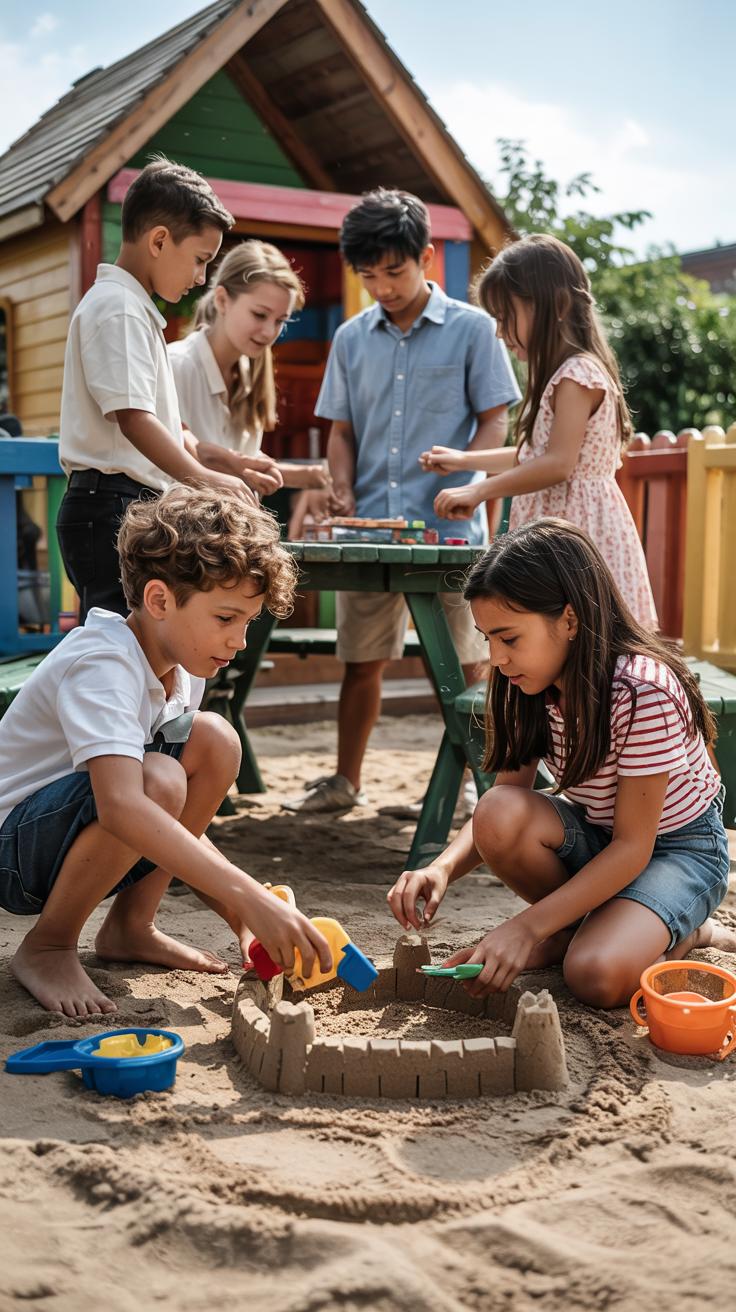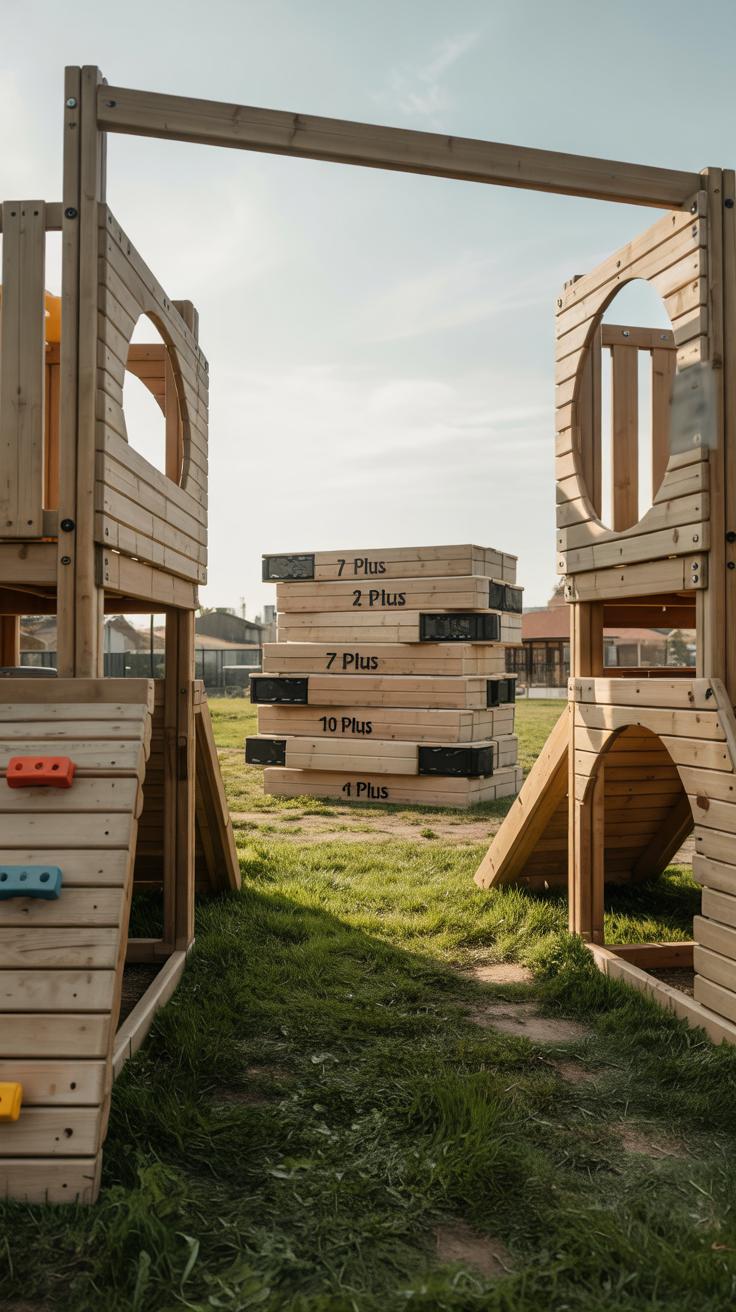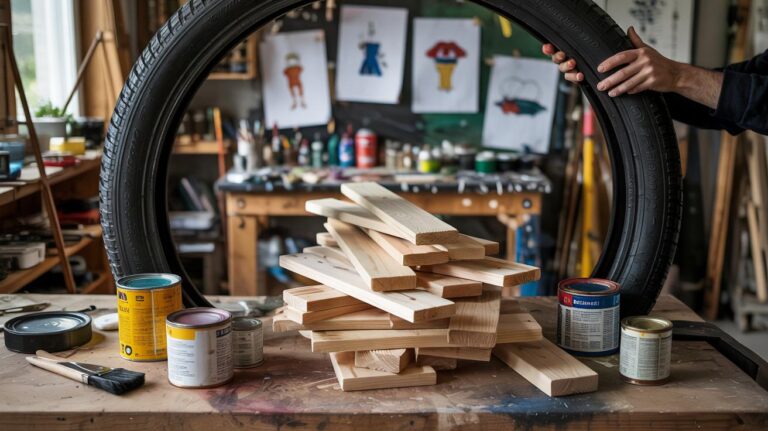Introduction
Designing a backyard play area for your kids can transform your outdoor space into a fun and engaging environment. It’s a place where children can be active, creative, and social. Setting up a play area involves more than just placing a few toys outside. You need to think about safety, variety, and how the space can grow with your child.
Having a dedicated play space outdoors encourages healthy physical activity and helps kids develop social skills through play. You can create a spot that sparks imagination and offers different types of activities to suit all interests. This article discusses practical ways to design a backyard play area that maximizes fun and keeps your children safe.
Choosing the Right Location for Your Play Area
Selecting the best spot in your backyard for a kids’ play area affects how much your children enjoy it and how safe it is. Look for a flat surface to prevent trips and falls. Uneven ground can make running and climbing risky.
Think about where the sun falls during different times of the day. Too much direct sunlight can lead to discomfort or sunburn. Try to find a place that gets morning sun and afternoon shade or vice versa. Can you see the area clearly from inside your house? Being able to watch your kids from a window or patio helps with supervision.
Consider nearby hazards like pools, garden tools, or thorny plants. Keep the play space away from these dangers or block access with fencing or barriers. Reflect on how your backyard layout affects noise and whether the kids might disturb neighbors or pets.
Sunlight and Shade Balance
Children need some sunlight for vitamin D but also require cool shade to avoid overheating. A balance keeps the play area comfortable. If your yard lacks natural shade from trees, add umbrellas, shade sails, or pergolas where kids gather.
Positioning the play space under scattered tree branches creates dappled light, cooling the area without making it too dark. You can also use adjustable shades that move as the sun changes position.
Ask yourself if the chosen solutions provide enough protection during summer. Are shaded spots near swings, slides, or sandboxes? Shade ensures longer outdoor playtime and guards against heat exhaustion.
Safety Considerations
Prevent accidents by keeping play areas clear of hazards. Pools must have secure, locked fences that children cannot open. Check that gates close automatically. Store sharp tools or lawn equipment in locked sheds or areas away from the play zone.
Visibility matters. Place the play area where adults can watch easily from inside or while gardening. This helps stop problems before they start. Remove trip hazards like garden hoses, rocks, or uneven pathways.
Think about how rainwater drains in the spot. Avoid low areas that collect water and create slippery mud. Choose tough, soft surfaces like mulch, rubber mats, or grass. These absorb impact and reduce injuries during falls.
Selecting Play Equipment that Matches Your Childs Age
Choosing the right play equipment is key to keeping your children both safe and engaged. Equipment that fits their age helps prevent injuries and keeps playtime fun. For toddlers, look for items that encourage basic movement and exploration without height or speed that could cause falls or accidents. Small slides with gentle slopes, ride-on toys that support balance, and soft mats provide a great start. As kids grow, they crave more challenging activities that develop strength and coordination. Larger climbing structures, swings, or monkey bars suit older children. Matching equipment to your child’s age not only protects them but also encourages confidence and skill building. What does your child enjoy most? Finding equipment that excites them ensures they will return to the play area often.
Play Equipment for Toddlers
Toddlers benefit from play equipment designed to keep them close to the ground. Small slides with gentle inclines allow little ones to practice climbing and sliding safely. Sandboxes offer endless sensory play opportunities while staying contained and low risk. Soft mats or foam tiles create cushioned spaces where toddlers can crawl, tumble, or learn to walk without injury. Look for ride-on toys that promote balance but remain stable and easy to control. Keep equipment simple with wide bases to avoid tipping. Choosing these kinds of items gives toddlers a secure environment to explore their developing motor skills. How much space do you have for these items? Compressing these play options into a cozy corner can make supervision easier.
Play Equipment for Older Children
Older kids need more complex and larger equipment to stay interested. Swings offer rhythmic motion and fun challenges with coordination and timing. Monkey bars develop upper body strength and improve hand-eye coordination. Climbing walls add variety by requiring problem-solving and physical effort. Larger slides and rope ladders encourage risk-taking within a controlled setting. Equipment for older children should support active play while matching their growing abilities. What kind of challenges excite your child most? Offering options that combine physical and mental demands helps older kids build confidence and stamina. Make sure you have room to space out equipment to avoid crowding and allow free movement.
Incorporating Safety Features
Creating a fun play area means making safety a priority. Soft ground surfaces cushion falls and help prevent injuries. You want to pick materials that protect without causing harm. Proper fencing keeps children inside the play zone and away from potential dangers like streets or pools. Securely installing play equipment stops it from tipping or breaking under active use. Make sure bolts and screws are tight and parts fit correctly.
Think about the space between slides, swings, and climbing structures. Keeping enough distance reduces accidents when kids run or play nearby. Have you noticed areas where children might get stuck or hurt? Adjust those spots carefully. Safety features do not just protect—they allow kids to play with confidence and parents to feel at ease.
Ground Materials Choices
Soft ground surfaces reduce injuries from falls. Rubber mulch offers a springy landing and does not attract insects. Wood chips are natural and easily available but need regular raking to avoid hard spots. Sand cushions well but may get messy or hide sharp objects. Artificial grass looks neat and drains water quickly. It also feels softer than bare dirt or concrete.
Think about the weather and maintenance. Will rain wash away the surface? Do you want to refill materials often? Each option needs care to stay safe. Testing small areas first can help decide what fits your backyard best. What surface would make your child feel safe enough to try new moves?
Fencing and Boundaries
Fences keep play areas inside a clear border. This prevents children from wandering into the street or the garden where tools or chemicals may lie. Choose a fence height that stops kids from climbing over. Gates with childproof latches add extra security and allow adults easy access.
Marking boundaries with flower beds, rocks, or low walls can also guide children without full fencing. Clear borders teach kids where the play zone ends. Could defining space in your yard help your child stay focused and less likely to run off? Thinking about boundaries helps protect children and supports their play freedom safely.
Adding Variety with Different Types of Play
Creating a backyard play area with various types of play keeps children interested and helps them grow in many ways. You can mix physical, imaginative, and sensory play to develop different skills. How often do your kids get to use their muscles, creativity, and senses all in one spot?
Physical play builds strength and coordination. Imaginative play encourages problem-solving and social skills. Sensory play sharpens touch, sight, and hearing. Combining these supports balanced development and longer playtime. Think about including play options that switch between energy-burning and quiet moments.
Adding different play types also invites kids of all interests to join. For example, your active child will enjoy climbing, while a quieter child might prefer a sand table. You can keep your backyard exciting by changing or upgrading elements based on your children’s evolving needs.
Physical Play Elements
Swings give kids a chance to work on balance and coordination. Climbing frames build muscle strength and challenge problem-solving. Open spaces encourage running, jumping, and games like tag. Installing a slide provides fun and helps with spatial awareness.
Consider including a rope ladder or monkey bars. These push children to stretch and use different muscle groups. Setting up a small obstacle course lets kids practice agility and focus. You can create safe zones with soft surfaces to promote active play without injury.
Ask yourself: Does your play area offer enough challenge for growing kids? Adding variety with flexible equipment can keep physical play engaging through different ages.
Imaginative and Sensory Play
Imaginative play lets children create stories and roles. A playhouse turns your backyard into a stage for social interaction. Sand and water tables offer endless creative possibilities through building and mixing. These activities encourage exploration and fine motor skills.
Musical toys like chimes or drums appeal directly to the senses. They develop listening skills and hand-eye coordination. Nature elements such as flower or herb gardens let kids touch, smell, and learn about plants. Rotate sensory features seasonally to keep experiences fresh.
Consider: How can your backyard inspire curiosity and creativity daily? By including open-ended toys and materials, you give children tools to invent their own play. This nurtures imagination alongside sensory development in a shared outdoor space.
Maximizing Space in Small Backyards
Small backyards can still become exciting play areas for children. You just need smart planning to make the most of limited space. Start by thinking upward instead of outward. Using vertical space reduces clutter and opens up room on the ground for running and active play.
Choose equipment that serves more than one purpose. For example, a slide that doubles as a storage bin for toys saves space and keeps everything organized. Compact designs that fold up or stack can also expand your options when space is tight.
Ask yourself what types of play your children enjoy the most. Tailor the layout to fit those activities with versatile pieces. Even a small backyard can become a vibrant play zone when you maximize every inch and combine functionality with fun.
Using Vertical Space
Wall-mounted climbing holds create a mini rock-climbing area without taking up floor space. You can install these on fences or sturdy walls, making climbing accessible but contained. Hanging swings also save ground room. Suspend them from a strong overhead beam or one corner of the yard.
Vertical gardens can double as natural play boundaries or spots for children to watch butterflies and bugs. A chalkboard attached to a fence can inspire creativity while standing upright. Consider adding hooks for hanging balls, jump ropes, or hats to keep the ground clear.
Multi-functional Equipment
Slides with built-in storage offer a blend of fun and neatness. A playhouse combined with a sandbox creates two play zones in one footprint. This arrangement encourages imaginative play while keeping sand contained.
Benches with storage underneath can serve as seating and a place to stow toys. Some climbing frames include tunnels or cubbies that double as hideouts, expanding play options without extra space. When selecting equipment, focus on pieces that provide several play experiences all in one spot.
Keeping the Play Area Clean and Maintained
Regular cleaning and upkeep of your backyard play area keeps kids safe and eager to play. Dirt, leaves, and broken parts can turn fun spaces into hazards quickly. You can spot issues early and avoid injuries by making cleaning a habit.
Simple routines ease the burden. Removing lost toys and debris each day keeps the area clear. Checking equipment for loose screws or cracks helps prevent accidents. Clean surfaces reduce bacteria and allergens that cause sickness.
Maintenance also keeps the play area looking inviting and lasts longer. How often do you inspect your playground? Regular care protects your investment while encouraging your children to enjoy their outdoor time safely.
Daily and Weekly Clean Up Tasks
Pick up toys and put them in storage every day. This avoids tripping hazards and keeps the yard organized. Sweep or hose down surfaces like patios or rubber mats to remove dirt and leaves that build up.
Look closely at swings, slides, and climbing frames each week. Tighten loose bolts, check for splinters on wood, or cracks in plastic parts. Fix small problems immediately to stop them from getting worse.
Spend 10 to 15 minutes on these checks. You’ll save time and money by stopping damage early. Could these small habits make playtime safer in your home?
Seasonal Maintenance
With changing seasons, perform a deeper inspection of all play equipment. Repainting metal or wooden parts protects them from rust and weather damage. This keeps the play area neat and resistant to wear.
Check ropes, chains, and fasteners for signs of wear or rust. Replace anything that looks weak or broken. Swap out faded or torn mats and cushions to maintain comfort and safety.
Adjust your maintenance routine before and after winter to prepare for harsh conditions. Are you ready to protect your backyard playground so it stays fun and safe all year long?
Encouraging Social Play and Interaction
Design your backyard with spaces that invite kids to play together. When children share equipment and activities, they learn to cooperate, take turns, and build friendships. Creating zones that naturally bring children close encourages conversation and teamwork.
Think about how your play area’s layout can promote group activities instead of isolated play. A circular or semi-enclosed design with different interactive spots helps kids move between games and encourages shared experiences. Have you noticed how children flock to spaces where they can see and hear each other?
Offer play options that require more than one participant. Designing for social play fosters skills like problem-solving and empathy, which are valuable beyond the backyard. You can enhance these moments by adding spots where kids can pause and connect face-to-face during or after play.
Including Group Play Equipment
Select equipment that invites multiple children to play at once. Seesaws work well because they need two to balance and move together. Large sandboxes provide a tactile spot for building and sharing toys. Group swings let children wait their turn or swing side by side, encouraging chatting and cooperation.
For example, a round swing that fits three or four kids can become a social hub. Combining such items with open play areas makes the environment flexible for group games or spontaneous teamwork. What group equipment could fit your space and encourage your kids to connect?
Creating Comfortable Seating Areas
Include benches or picnic tables where children can sit, rest, and talk. These spots offer breaks during active play and serve as places to share snacks or stories. Position seating near popular play equipment to keep kids engaged even when they’re not moving around.
A simple wooden bench or a picnic table designed for children works well. Having a dedicated social spot helps kids build bonds and practice communication skills in a relaxed setting. Are there corners in your yard that could become cozy hangouts for kids and friends?
Planning for Growth and Changing Interests
Your backyard play area should grow with your children, keeping them engaged as their interests shift. Think about designs that can adapt over time. Choose equipment that changes with their age and abilities. Create spaces that can be rearranged, expanding or shifting purpose when needed.
As kids get older, they may want more challenging activities or space for new hobbies. Your play area can support this by including modular pieces and flexible zones. Imagine how you might reuse a climbing frame for a goalpost or turn a sandbox into a small garden patch. Ask yourself: how can this space stay fun for different ages and activities? This forward thinking helps avoid costly redesigns and keeps play exciting for years.
Modular and Adjustable Equipment
Look for swings with adjustable heights or seats that can switch between toddler and big kid styles. Climbing frames with removable parts let you add or remove obstacles to match skill levels. Some sets offer extension kits, turning a simple structure into a mini obstacle course or a more complex climbing wall.
You might install a slide that’s easy to swap for a rope ladder as kids grow. Equipment that folds or moves helps you change the layout without major work. When choosing gear, ask vendors about options to upgrade pieces. This means your play area stays fresh and encourages kids to challenge themselves safely.
Flexible Play Zones
Create zones that serve different functions over time. A corner can start as a chalk-drawing wall but transform into a spot for building Lego castles or science experiments. Use portable tables, benches, and storage to make this switch easy. Open grassy areas work well for sports, but when needed, they can host picnic or craft sessions.
Think about your child’s current hobbies and what they might enjoy later. Setting aside multipurpose space gives room for creativity and physical activity. Could that patch of lawn become a small stage for performances, or an area for board games? Designing with flexibility means your backyard stays a place your kids want to return to as they grow.
Conclusions
Careful planning leads to a backyard play area that serves your children’s needs well. Choose equipment and features that fit your yard size, budget, and your child’s age and preferences. Consider materials and placement to keep the play zone safe and accessible.
By involving your kids and thinking through each step, you create a space they want to use every day. Regularly update and maintain the area to ensure it stays inviting and secure. A well-designed backyard play area offers hours of fun, encourages healthy habits, and becomes a favorite family spot.

